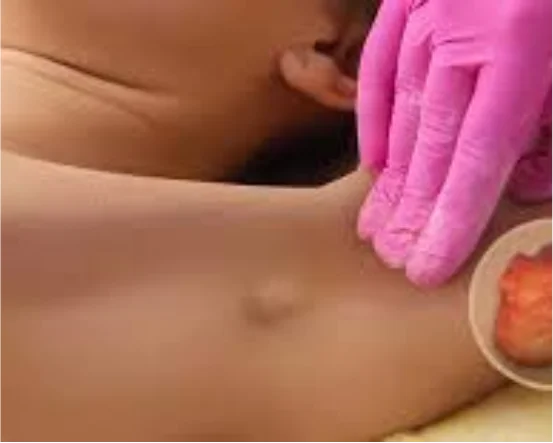Introduction
Burn injuries are among the most devastating traumas an individual can experience, often leading to lasting physical, functional, and psychological effects. While acute burn care focuses on stabilizing the patient, preventing infections, and promoting wound healing, the long-term effects of burns require a different approach burn reconstruction surgery. This specialized branch of surgery is focused on restoring appearance and function through a series of carefully planned procedures.
Burn reconstruction is not a one-time operation. It often involves a staged approach depending on the severity and location of the injury, the extent of scarring, and the overall health of the patient. The ultimate goal is to improve mobility, reduce deformities, enhance cosmetic appearance, and help patients return to a more normal life. The process is highly individualized and may range from simple skin grafts to complex microsurgical flap reconstructions. Below are the key procedural steps and considerations involved in burn reconstruction surgery procedure.
Burn Reconstruction Surgery Procedure
- Preoperative Assessment and Planning :- Before any surgical procedure is carried out, a detailed preoperative evaluation is necessary. This includes a physical examination, imaging studies, and a complete assessment of the patient’s medical history, including the extent of the burn, the areas affected, and the previous treatments undertaken. This stage also includes consultations with a multidisciplinary team, including plastic surgeons, anesthesiologists, physiotherapists, and psychologists. The patient’s goals, expectations, and readiness for surgery are taken into account. In some cases, 3D imaging or digital modeling may be used to plan out the procedures precisely. Surgical planning also involves prioritizing the most functionally or cosmetically important areas first, often addressing issues like contractures or deformities near joints, the face, or hands.
- Anesthesia and Surgical Preparation :- Once the surgical plan is finalized, the patient is brought into the operating room where general or regional anesthesia is administered, depending on the extent and location of the procedure. The surgical area is cleaned and prepped under sterile conditions to minimize the risk of infection. In burn patients, special precautions are often taken during anesthesia due to previous respiratory complications, scarring around the airway, or weakened cardiovascular systems. Anesthesiologists are usually highly involved during these surgeries, especially for long or complex procedures.
- Scar Release and Contracture Correction :- One of the fundamental steps in burn reconstruction is the release of scar tissue that has formed contractures tight, fibrous bands that limit movement. In this step, the surgeon makes precise incisions to release the tightened skin and restore a more natural range of motion. Depending on the severity, the release may involve skin, subcutaneous tissue, muscles, or even tendons. Once the contracture is released, the resulting defect must be covered with healthy tissue, either through grafts or flaps. In some cases, local tissue is rearranged (as in Z-plasty) to reduce tension and improve functional and aesthetic outcomes.
- Skin Grafting :- Skin grafting is one of the most commonly used techniques in burn reconstruction. It involves taking healthy skin from one part of the body (the donor site) and transplanting it onto the area where skin is missing or damaged (the recipient site). There are several types of grafts used, including split-thickness grafts (which include the top layers of the skin) and full-thickness grafts (which include all skin layers). The choice depends on the area being treated and the desired outcome. For example, full-thickness grafts are often used in highly visible areas like the face due to their better cosmetic results. Grafts must be secured properly and monitored for signs of rejection, infection, or fluid buildup under the graft. Healing usually takes about 1–2 weeks for donor sites and longer for the grafted areas.
- Flap Reconstruction :- In cases where skin grafts are not sufficient such as over joints, tendons, or bones flap reconstruction is used. A flap consists of skin and underlying tissue (sometimes including muscle or bone) that is moved from one part of the body to another. Unlike grafts, flaps have their own blood supply, making them more suitable for deeper and more complex reconstructions. There are several types of flaps, including local flaps (from tissue adjacent to the defect), regional flaps, and free flaps (transferred from a distant part of the body using microsurgery). Flap reconstruction allows for better contour, durability, and function, particularly in high-stress areas like the hands or feet.
- Tissue Expansion :- For larger defects or when skin color and texture matching is crucial, tissue expansion may be used. This involves placing a balloon-like device called a tissue expander under the skin near the burn site. Over weeks or months, the expander is gradually filled with saline to stretch the skin. Once sufficient skin has grown, it can be used to replace the scarred area. Tissue expansion is particularly useful in facial reconstruction where color and texture matching is vital. Though it requires patience and multiple steps, the end result is often more natural and aesthetically pleasing than grafts or flaps from distant sites.
- Cosmetic Refinement Procedures :- Once the major functional concerns have been addressed, additional cosmetic procedures may be performed to enhance the final appearance. These may include scar revisions, dermabrasion, laser therapy, or fat grafting to smooth out irregularities or improve skin tone. Scar revision involves excising thick or raised scars and re-closing the wound with more precise surgical technique. Dermabrasion and lasers can reduce surface irregularities and discoloration. Fat grafting helps to restore volume and smooth out depressed or sunken areas. These refinements are often done months after the initial reconstruction, once tissues have healed.
- Postoperative Care and Rehabilitation :- Burn reconstruction surgery does not end in the operating room. After surgery, patients need careful monitoring for complications such as infection, poor wound healing, or graft rejection. Dressings are regularly changed, and antibiotics may be administered to prevent infection. Rehabilitation begins early, often within days after surgery, and involves physical therapy, occupational therapy, and sometimes speech therapy depending on the site of surgery. The goal is to restore movement, strength, coordination, and function. Psychological support is also a critical component, as burn survivors often face challenges with self-esteem, body image, and mental health.
- Staged and Ongoing Procedures :- Due to the complex and evolving nature of burn injuries, many patients require multiple surgeries over months or even years. This staged approach allows tissues to heal and regenerate before additional procedures are undertaken. Each subsequent surgery is often less extensive than the first and aims to refine previous results, address new challenges, or improve specific functions. For example, a child with burns may need revisions as they grow, or an adult may choose additional surgeries for cosmetic reasons after functional recovery has been achieved.
- Long-Term Follow-Up :- Long-term care is an essential part of burn reconstruction. Surgeons continue to monitor patients for years to assess graft survival, flap function, scar maturation, and overall satisfaction with the outcomes. Patients are encouraged to stay engaged in physical therapy, adhere to scar management regimens (like wearing pressure garments or using silicone sheets), and maintain regular check-ups. Early detection of any complications allows for timely intervention and helps preserve the surgical results. This extended relationship between patient and care team often results in improved functional outcomes, better aesthetic results, and a stronger sense of emotional recovery.
Conclusion
Burn reconstruction surgery is a complex, staged, and highly personalized process aimed at restoring function, improving appearance, and enhancing quality of life for burn survivors. From initial assessments and contracture release to grafting, flap reconstruction, and cosmetic refinements, each step is thoughtfully planned to achieve the best possible outcomes. While the journey can be long and challenging, advances in surgical techniques and a multidisciplinary approach have made it possible for many patients to return to active, fulfilling lives after even the most severe burn injuries. With proper postoperative care, rehabilitation, and long-term follow-up, burn reconstruction offers hope and healing that extends far beyond the physical scars.























